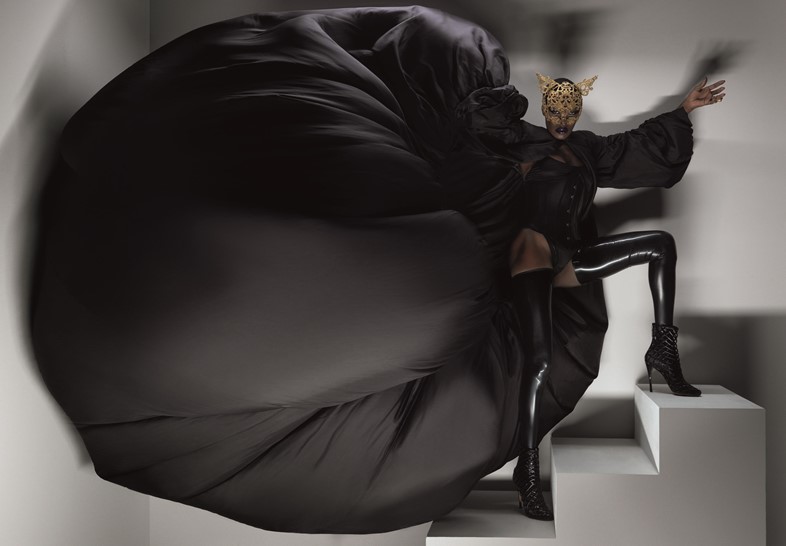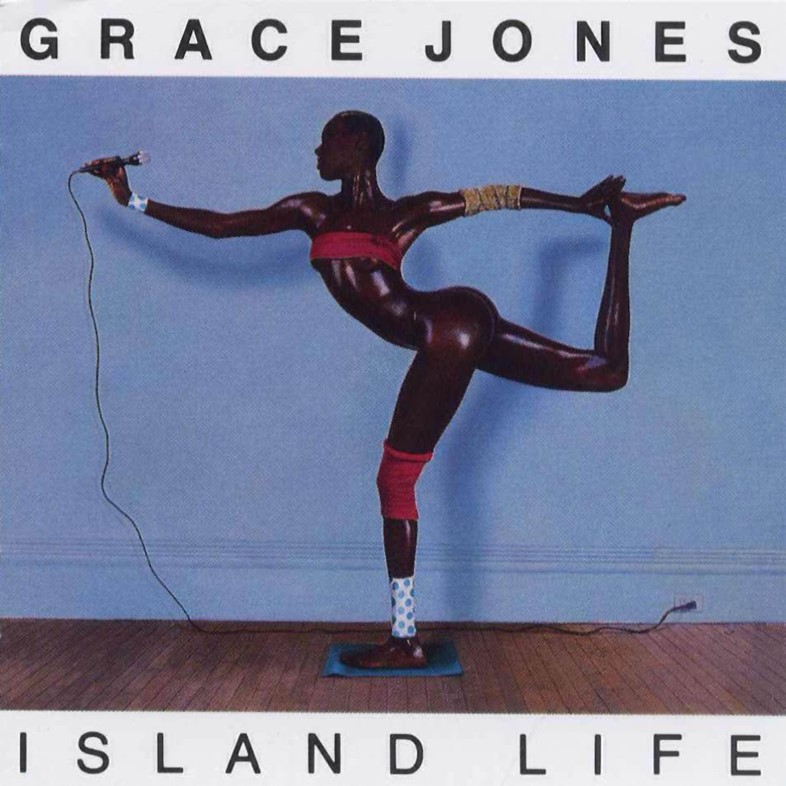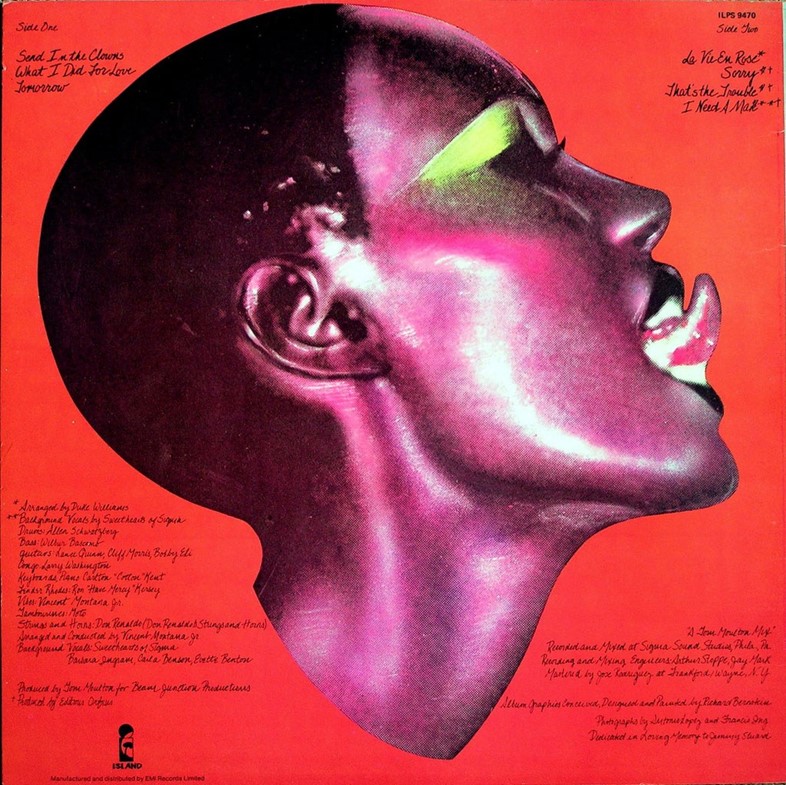As she takes to the stage at Standon Calling this weekend, we dissect the potent cocktail that has long-powered her
In 1982, Grace Jones released her long-form music video, A One Man Show, directed by her now ex-partner Jean-Paul Goude. One minute in, we see Jones’ head on both a woman and a man’s nude body, both are wearing only a black beret, holding the same glass of red wine and looking at one another. The Eiffel Tower is visible behind them. In this single shot, Jones offers us her journey: a visual exploration of femininity and masculinity, set against a Parisian backdrop – the city that launched her modelling career. What follows this scene is 45 minutes of artistic brilliance, drawing together Jones’ multiple personalities: Jones the artist, the performer, the photographer’s muse and the style chameleon.
Bridging roles as a supermodel, music icon, actress and style symbol, Jones has led a gregariously multiplicitous life. The success to such an audacious career is, as she declares in her memoir I’ll Never Write My Memoirs, absolute self-love: “Sometimes you have to love yourself to keep yourself whole.” Using clothing not as an addition to, but as an exquisite extension of, her body, Jones’ aesthetic is integral to her ‘whole’. Her sheer presence as a performer – thrusting across a stage as she unleashes her low and powerful voice – is transcendent. In celebration of her upcoming show at Standon Calling, marking her 40th year in music, we examine her commitment to fearless individualism and self-love.

Defining Features
Grace Jones’ style on-stage, on-screen, and off, is inimitable. Before the fame and fortune, as she lip-synched on tabletops in Paris during the early 70s, she was the maker of her own magic: “I don’t cook, but I can sew,” she told Interview Magazine in 1984 of her self-realised, though extreme, style statements. After she was signed to Island Records in 1977, she quickly became a style icon of the more lavish sort, famed for her hooded capes – think of her fierce hooded biker jacket and spandex villain look in Bond film A View to a Kill (1985) – an expansive fur collection, which she famously kept in a vault at Bergdorfs, and her androgynous suited looks, notably the black angular jacket on her 1981 Nightclubbing cover.
Through these looks, straddling high-octane glamour and unorthodox androgyny, Jones was able to subvert societal norms of gender, race and sexuality. For her role in the 1986 film Vamp, she appeared as vampiress Katrina wearing a red wig, gothic red gown and black gloves with attached pointed fingernails. As she writhes around a strip club stage, seducing the audience, she removes her dress revealing her nude body which had been painted by social activist and artist Keith Haring, who was famed for his interrogation of themes of sexuality, birth, death and war. As Barbara Creed wrote in The Monstrous-Feminine: Film, Feminism, Psychoanalysis in 1993: by the 1970s, the figure of the female vampire was prominent in film, its exploration of the relationship between sex, violence and death, came to symbolise a threat to patriarchal society. Such alignment with anarchy has continued throughout Jones’ career, to the extent that she resurrected this now monumental moment, donning the same Haring body paint, during her 2015 festival circuit. By continually entwining her visual self with these subversive themes, Jones’ style has become an artwork in itself: both political and beautiful.
Seminal Moments
Born in Jamaica on May 19, 1948, Jones was raised in a strict and Christian environment by her grandparents. In 1964, when in her teens, she joined her parents in New York where, having signed a modelling contract with Wilhelmina before she was 18, she quickly shed her confined upbringing and became immersed in glamorous society. Her career took her around Europe, where she modelled for Yves Saint Laurent and Kenzo, starred on the covers of ELLE and Vogue, and befriended stars like Jerry Hall, Giorgio Armani, Andy Warhol and photographer Jean-Paul Goude. It was with the latter that, in 1979, she gave birth to her son Paulo Goude.
Deep into this heady decade, she released her debut album Portfolio – it would be the first of ten, including the acclaimed Fame (1978), Warm Leatherette (1980) and Slave to the Rhythm (1985). Meanwhile she'd become a regular at Studio 54 and earned a following in New York’s gay and art scenes. Rather than simply pursue the life of a party girl, it was here that she began to experiment with her body – whether pumping iron or taking LSD – seemingly relishing all experiences life has to offer. Expanding her repertoire further still, 1984 saw her acting debut in the film Conan the Destroyer (followed swiftly by her role as Bond villain in 1985). By this point, Jones’ powerful voice and image had penetrated every artistic genre available and, with her inimitable ferocity, she had cast herself as integral to every movement of the era.

She’s AnOther Woman Because…
Grace Jones is a music icon, film star and unrivalled entertainer. She is a vampiress, a lioness and a woman of incredible power, because she has spent her career defying categorisation. In her memoir she writes: “If you want me, this is me. Not the caricature of me. This is the deeper me, the other me, and there are other me’s I’ve not even thought of. But I’ll get to them”. Grace Jones effuses with love,and sensuality, she is expressive and passionate. But for all her carnal warmth she is equally fierce, intelligent and robust.
During her career, Jones has been assumed as a man in drag or accused of being too masculine, a bitch and intimidating – an incident on the Russell Harty show in 1981 where, feeling ignored by the programme's presenter, she slapped him, only served to perpetuate this. And why? Because her voice, her body, her talent is that of an unapologetic and determined woman who is unafraid to strive for power in a man’s world. She isn’t afraid to contradict herself, or to act on what she wants and feels in the moment. Grace Jones is always present and so, consequently, always ahead of time.
